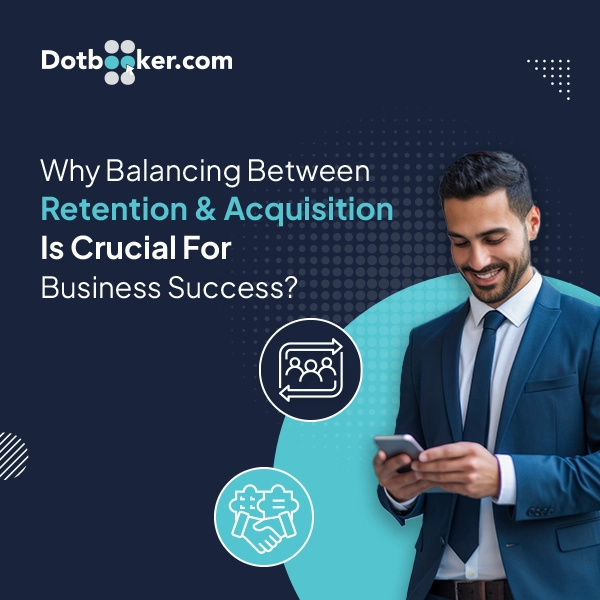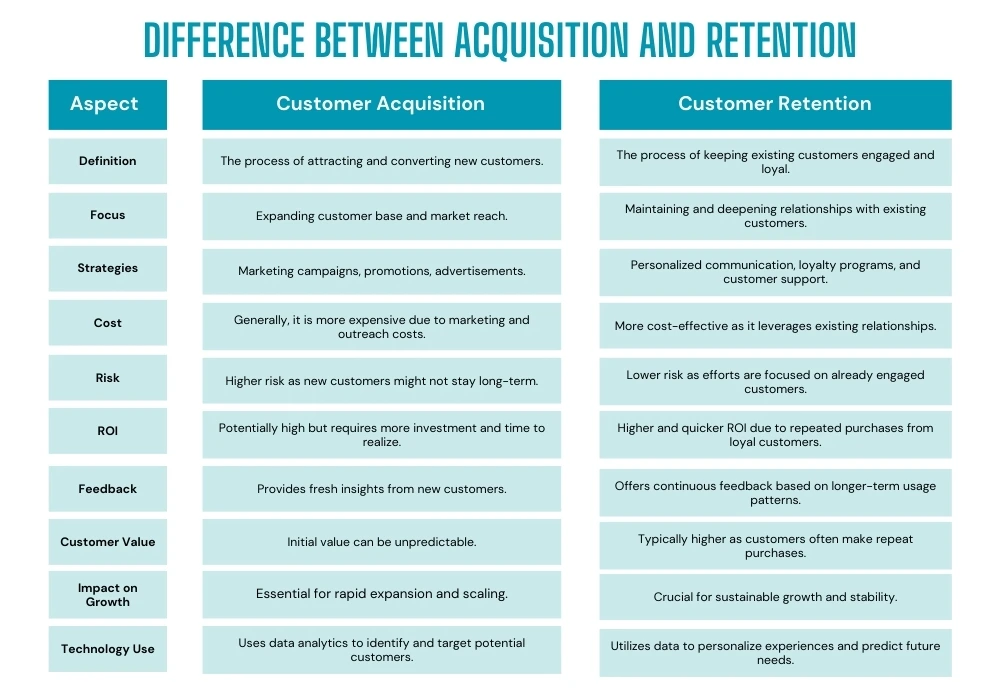
- By Dotbooker
- Jan 24, 2025
- 298
Retention vs. Acquisition: Why Balancing Both is Crucial for Business Success in 2025
In the dynamic realm of 2025's business world, enterprises grapple with the pivotal challenge of balancing customer acquisition and retention. This balancing act is crucial as it determines not only the immediate growth but also the long-term success and sustainability of businesses.
With the strategic deployment of client management software, organizations can optimize their approach, ensuring a robust footing in a fiercely competitive marketplace.
The Twin Pillars of Business Growth
In an ideal business scenario, every new customer would become loyal, and every day would bring a stream of new clients.
Achieving a balance between retention and acquisition might seem daunting, but it is attainable and crucial. Companies often oscillate between prioritizing new customer acquisition and nurturing their existing customer base.
Each strategy is essential, yet favoring one over the other can lead to significant opportunities slipping through the cracks.

Understanding the Basics: Acquisition vs. Retention
Let’s understand the basic information on what acquisition and retention are all about.
What is Acquisition?
Acquisition involves attracting and converting new customers to your business. It's about creating initial awareness, fostering interest, and compelling new leads to choose your service or product over competitors.
Acquisition strategies are often aggressive and costly, focusing on marketing campaigns, promotional offers, and broad-reaching communication efforts.
What is Retention?
Retention focuses on keeping existing customers engaged, satisfied, and loyal. It involves strategies to enhance customer satisfaction, encourage repeat business, and establish long-term relationships.
Retention tactics include personalized communication, loyalty programs, regular feedback loops, and proactive customer service.
The difference between Acquisition and Retention is as follows:

The Cost of Neglect: Diving Deeper into Acquisition and Retention
The Financial Implications
Acquiring a new customer can cost five times more than retaining an existing one. Despite this, many businesses disproportionately invest in acquisition.
However, boosting customer retention by just 5% can increase profits by 25% to 95%. These statistics underscore the financial efficacy of a balanced approach.
Strategic Integration with Client Management Solutions
Utilizing cutting-edge client management systems is crucial for balancing these strategies. Such systems help streamline acquisition by efficiently managing leads and conversions and enhance retention by personalizing the customer experience and automating engagement efforts.
Factors Highlighting the Importance of Both Acquisition and Retention
Market Expansion vs. Base Solidification
The acquisition allows a business to expand its market reach and tap into new segments, while retention solidifies the existing base, creating a stable revenue flow.
Cost Efficiency
While the acquisition is costly, it's necessary to introduce fresh blood into the customer lifecycle. Conversely, retention is more cost-effective and contributes to a higher ROI over time, emphasizing the need for a dual-focus strategy.
Brand Reputation
Frequent acquisition demonstrates market dynamism and attracts investor interest, enhancing brand visibility. Simultaneously, high retention rates often indicate superior product quality and customer service, bolstering brand reputation.
Customer Lifetime Value (CLV)
Retention boosts CLV, as loyal customers are more likely to make repeated purchases and try new offerings. When effectively managed through client management software, acquisition strategies can significantly increase the pool of these valuable customers.
Feedback and Innovation
Retained customers provide continual feedback, which is essential for iterative improvements and innovation. The acquisition brings diverse customer expectations and experiences, broadening the feedback loop and informing business strategy.
A surprising 70% of companies that excel in customer experience rely on client management tools to balance acquisition and retention effectively.
The Role of Technology in Client Management
Advanced client management solutions integrate AI and machine learning to refine acquisition and retention. These technologies enable predictive analytics for forecasting trends and customer behaviors and facilitate timely and relevant engagements, enhancing acquisition and retention metrics.
Looking Ahead: Sustaining the Balance
Navigating the complexities of the modern market demands a strategic approach to acquiring new clients and retaining existing ones. Dotbooker provides a sophisticated array of features that support this dual strategy, thereby not merely serving as a tool but as a cornerstone of business growth.
In an era where customer dynamics are continuously evolving, maintaining a balance between acquisition and retention is not just beneficial; it's imperative for business success. Let's forge ahead, ensuring every customer acquisition is a step towards greater profitability, and every retention effort strengthens the foundation for enduring success.
Popular Blogs

- Oct 20, 2022
- 3015

- Sep 08, 2024
- 1917

- Nov 11, 2022
- 1444

- Sep 16, 2024
- 1262
Transform your business now!

Get an expert consultation for your business's streamlined operations.